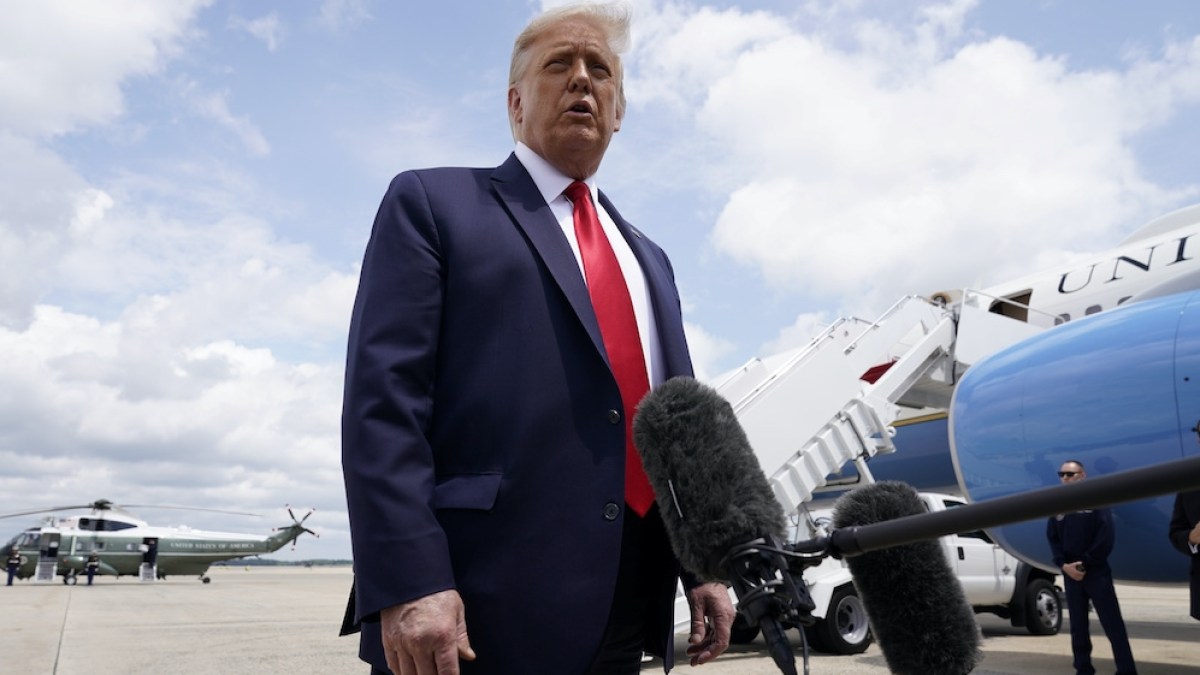Hollywood's Hope: Trump, Film Production, And The Reality Of Reshoring

Table of Contents
The Allure of Offshoring: Why Film Production Went Overseas
The exodus of film production from the United States wasn't a sudden event but a gradual shift driven by several key factors. The primary driver has been the significant cost differential between American and international production.
- Lower labor costs: Countries like Canada, Mexico, the Czech Republic, and various parts of Asia offer significantly lower wages for crew members, actors, and other personnel involved in filmmaking. This translates to substantial savings for production companies.
- Tax breaks and incentives: Many foreign governments actively compete for film productions by offering generous tax breaks, rebates, and other financial incentives designed to attract productions and boost their local economies.
- Access to diverse locations and filming environments: International locations provide a wide variety of landscapes, architectural styles, and cultural settings that can be difficult or expensive to replicate in the United States.
- Reduced regulatory hurdles: In some international locations, the regulatory environment for film production is less complex and more streamlined, potentially reducing production delays and costs.
According to a recent study by the Motion Picture Association, in recent years, a significant percentage of Hollywood productions—estimates range from 30-40%—have been shot outside the US. Canada, in particular, has become a major hub for American film and television production.
Trump's Impact on Reshoring Initiatives
The Trump administration made "bringing jobs back to America" a central theme of its economic policy. While not explicitly focused on the film industry, some of its policies were intended to create a more favorable environment for domestic production.
- Renegotiation of trade deals: The administration aimed to renegotiate trade deals, hoping to level the playing field and make American production more competitive.
- Tax cuts: The Tax Cuts and Jobs Act of 2017 significantly lowered the corporate tax rate. Proponents argued this would incentivize businesses to invest in the US, potentially including the film industry.
- Rhetorical support: Trump's frequent pronouncements about bringing jobs back to America created a climate of expectation, though whether this translated into concrete action for the film industry remains debatable.
However, the impact of these policies on reshoring film production was limited. While the tax cuts might have had a marginal positive effect, the fundamental cost disadvantages of filming in the US remained largely unchanged. There wasn't a significant observable shift in production locations to the US during the Trump administration despite the rhetoric.
The Reality of Reshoring Film Production: Challenges and Opportunities
Despite the desire to bring film production back to the US, reshoring faces significant challenges.
- Higher labor costs: The most significant obstacle is the substantial difference in labor costs between the US and many international locations. Union wages, crew costs, and other labor expenses are considerably higher in the US.
- Competition from established international production hubs: Countries with well-established film industries, experienced crews, and supportive infrastructure pose fierce competition. These locations have already invested heavily in attracting and retaining film productions.
- Infrastructure limitations: Certain US locations lack the necessary infrastructure—studios, sound stages, post-production facilities—to handle large-scale film productions.
- Regulatory complexities: The US regulatory environment for film production, while improving, can still be more complex than in some other countries, potentially increasing costs and delaying productions.
However, there are also significant opportunities:
- Job creation: Reshoring film production would create thousands of high-paying jobs in various sectors, from crew positions to post-production and ancillary services.
- Economic stimulus: Increased domestic film production would inject significant capital into local economies, benefiting businesses, communities, and infrastructure.
- Preservation of American filmmaking talent: Bringing production back home would help to retain and nurture American filmmaking talent, preventing the brain drain to international production hubs.
The Role of Tax Incentives and Government Support
Targeted tax incentives and government support are crucial for facilitating reshoring.
- State-level tax credits: Many US states offer tax credits for film production, aiming to attract productions and boost their local economies. These credits can significantly reduce the overall cost of filming.
- Federal grants and funding: Federal grants and funding for film infrastructure development are needed to improve facilities and support the growth of the American film industry.
- Streamlining the permitting process: Simplifying and speeding up the permitting process for film shoots would reduce delays and production costs.
Successful state-level programs, like those in California, New York, and Georgia, have demonstrated the effectiveness of tax incentives in attracting film productions. However, a more coordinated and comprehensive national strategy is needed.
The Future of Film Production in America: A Look Ahead
The future of film production in America is complex. Globalization will continue to play a significant role, and hybrid models combining domestic and international filming are likely to become more common. A complete return to the scale of US-based production seen decades ago may be unrealistic, but significant reshoring is achievable with a well-defined strategy.
- Ongoing impact of globalization: The interconnected nature of the global film industry makes it difficult to completely isolate production within national borders.
- Hybrid models: Many productions might adopt hybrid models, utilizing locations and crews in both the US and internationally to optimize costs and access diverse environments.
- Long-term strategy: A comprehensive long-term strategy, combining tax incentives, infrastructure investment, and regulatory reform, is essential to creating a sustainable and competitive environment for domestic film production.
Conclusion:
Reshoring film production to the US presents both significant challenges and substantial opportunities. While the policies of previous administrations, including the Trump administration, aimed to promote reshoring, the reality is more nuanced. Higher labor costs and established international competition remain major hurdles. However, targeted tax incentives, infrastructure development, and streamlined regulations can create a more favorable environment for domestic production. The future of Hollywood’s success and the American film industry hinges on a strategic approach to reshoring. We need a continued focus on policies that create a sustainable environment for domestic film production. Let's support initiatives that incentivize reshoring and safeguard the future of American filmmaking. Learn more about current reshoring initiatives and how you can advocate for change in your community.

Featured Posts
-
 Post Game Press Conference Anthony Edwards Unexpected Interruption
May 07, 2025
Post Game Press Conference Anthony Edwards Unexpected Interruption
May 07, 2025 -
 Zendaya And Tom Holland Share Baby Plans
May 07, 2025
Zendaya And Tom Holland Share Baby Plans
May 07, 2025 -
 Easy Question Costs Contestant On Who Wants To Be A Millionaire
May 07, 2025
Easy Question Costs Contestant On Who Wants To Be A Millionaire
May 07, 2025 -
 Alkhtwt Almlkyt Almghrbyt Tezz Rhlatha Byn Saw Bawlw Waldar Albydae
May 07, 2025
Alkhtwt Almlkyt Almghrbyt Tezz Rhlatha Byn Saw Bawlw Waldar Albydae
May 07, 2025 -
 Navigate The Private Credit Boom 5 Dos And Don Ts To Secure Your Role
May 07, 2025
Navigate The Private Credit Boom 5 Dos And Don Ts To Secure Your Role
May 07, 2025
Latest Posts
-
 Counting Crows 1995 Snl Performance A Career Changing Event
May 08, 2025
Counting Crows 1995 Snl Performance A Career Changing Event
May 08, 2025 -
 How Saturday Night Live Launched Counting Crows To Success In 1995
May 08, 2025
How Saturday Night Live Launched Counting Crows To Success In 1995
May 08, 2025 -
 The Impact Of Saturday Night Live On Counting Crows Rise To Fame
May 08, 2025
The Impact Of Saturday Night Live On Counting Crows Rise To Fame
May 08, 2025 -
 Counting Crows Snl Appearance A Defining Moment In 1995
May 08, 2025
Counting Crows Snl Appearance A Defining Moment In 1995
May 08, 2025 -
 Predicted Counting Crows Setlist For 2025 Concerts
May 08, 2025
Predicted Counting Crows Setlist For 2025 Concerts
May 08, 2025
